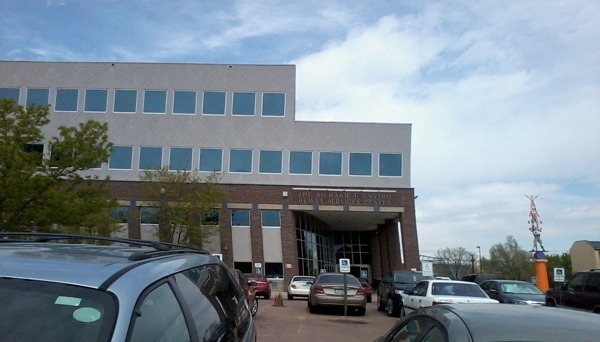
I planned to attempt some investigative journalism last month, but then I realized I didn’t need to “go undercover” in order to write this commentary.
During the course of my attempts to understand the needs of people on the margins in the Denver area, I’ve observed a few things about the nature of the system that is meant to serve them. The people I’ve met who work professionally or voluntarily in the human services arena, whether for government agencies, non-profits or faith communities, have routinely proven to be genuine, caring human beings. I would say the same for most of the people I’ve met who are forced by circumstances to get help from the system.
The system itself, however, can be impersonal, restrictive, and, at its worst, dehumanizing. Partly by necessity and partly by design, it values quantity over quality. Since it is confined by budgets, waiting lines, applications, procedures and requirements, it can hinder human connection between the two groups of well-meaning people I described above. All too often people on both sides of the system are forced to navigate and overcome disincentives, unnecessary bureaucracy and excessive program requirements, which leads to stress, frustration and alienation. It happened to a friend of mine recently when the very small raise she earned at her job caused her to lose a larger part of her government benefits. Sadly, that sort of thing is a common occurrence for people whose only practical recourse for survival is to seek help from the system.
I’ve been in and out of a number of social service agencies over the last several years, but last month I had a new purpose for visiting four county-run human services facilities in the Denver metro area. I wanted to imagine what it might feel like to enter as a client who needed help.
I dressed in nice pants and a button-down shirt, and decided not to talk to anyone unless someone talked to me first. So, at each facility I browsed job boards, scanned informational flyers on the walls, hung around the main waiting areas, picked up one of many applications available for assistance and generally walked around trying to look like I belonged. I could have gone further by taking a number and posing as a prospective client, but I wasn’t creative enough to make that happen.
One facility that I visited was packed; people milled around everywhere, in every nook and cranny of what seemed like a very substantial building. The other facilities weren’t as busy. Three of the four had security guards visibly present, and the other had a glassed-off reception window separating the offices of county employees from the main client waiting area. Out of all the facilities I visited, only one person smiled at me and said “Hi.” At three out of the four, I came away feeling overwhelmed, distrusted, vulnerable and even a little quarantined.
There’s a certain level of impersonality to be expected and tolerated from any system where you have to wait in long lines, whether it’s an embassy, a government social service agency, the driver’s license bureau or an airport security line. There just aren’t that many ways to process a large number of clients in a short period of time, and the more complex the problems of clients, the more complex the system becomes in order to accommodate their needs. Thus the system we have.
The safety of clients and employees, too, is clearly a concern for the agencies I visited. That is obviously not a bad thing, but the presence of different forms of security at those county facilities made me wonder how many disturbances have taken place there in the past. In any case, the thinking might be that people in line at social services departments are more susceptible to disturbing the peace on average than, say, people standing in line at the grocery store, so visible security could be a deterrent. But what the system said to me, subtly but clearly, during my brief and unscientific experiment was this — poor people are potentially dangerous.
I made a preliminary search for examples of workplace violence at human service agencies, but that yielded only a dissertation from the ‘1990s and a 2004 New York Times article, both focused on the state of New York. Unfortunately, the former link is a bit dated and the latter one is focused more on violence in health care facilities than social service agencies themselves. There are the Occupational Safety and Health Administration (OSHA) Guidelines for Preventing Workplace Violence for Health Care and Social Service Workers, but they don’t explain why the human services system sometimes feels inhumane.
What I hope the system could begin to communicate in verbal and nonverbal ways as it interfaces with clients is this message — poor people are people, too. Many of the people on the service-side of the system already communicate this message through their words and their lives, but it would be nice if the system were intentionally tweaked to reinforce that message. Might there be ways, for example, for local human service agencies to satisfy their security concerns while also incorporating practices that help reinforce clients’ dignity? The one facility I visited that had an unobtrusive security presence and a clean, ordered and respectful atmosphere made me feel more normal and welcome.
I know human service agencies sometimes refer to the people they serve as “clients,” so perhaps it would be appropriate for them to adopt the client-first models followed by some businesses, including my bank. It used to have security windows between clients and tellers, much like the social service agency I referred to above, but somewhere along the line the bank made the decision to remove the windows (but not the cameras and other security measures) and ramp up its customer service efforts. I actually enjoy visiting my bank now. I get popcorn, my kids get suckers and bank employees go out of their way to ask how they can help.
Of course, the bank has access to most of my savings. That initially seemed like a big difference from the human services system, until I recalled that the system, as well as its employees and various volunteers, operate largely through infusions of federal funds and various grants to be disbursed to clients. Client-choice models are already being adopted by some food banks around the metro area, so perhaps a more client-centered approach is applicable to the human services arena, after all. It certainly wouldn’t hurt for intake processes at human services agencies to feel a bit more “humane.”


